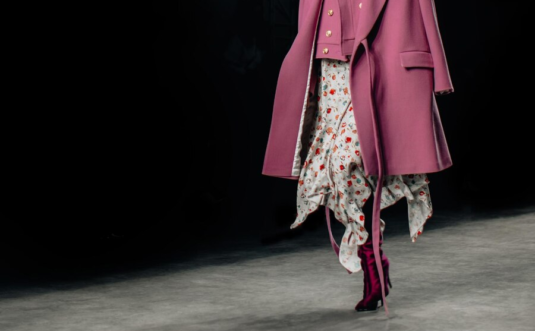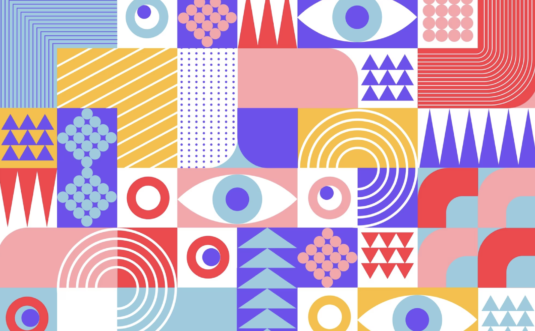Fashion is a vibrant tapestry that weaves together creativity, culture, and individual self-expression. Behind every stunning collection and runway spectacle lies a powerful force of inspiration that fuels the imagination of designers. The ability to draw inspiration from various sources is a distinguishing characteristic of experts, enabling them to create innovative designs that captivate the world.
In this article, we delve into the extensive realm of inspiration available to designers, unveiling the secrets that nurture their sartorial craftsmanship.
Nature’s Breathtaking Beauty
The captivating beauty of nature serves as an endless wellspring of inspiration for designers. The natural world is a vast playground of colors, textures, patterns, and forms, offering countless opportunities for creative exploration:
- The delicate petals of a blooming flower can inspire a designer to create a flowing dress with soft, ethereal layers;
- The rhythmic patterns of ocean waves can materialize into bold, dynamic prints adorning a vibrant summer collection;
- Enchanting sunset hues can influence a designer’s choice of shades and gradients in their palette.
In addition to visual appeal, nature also provides a wealth of textures and materials. The smoothness of polished stone can inspire the creation of elegant and minimalist accessories, while the rough bark of a tree can evoke a sense of earthiness, inspiring rustic designs. The interplay of light and shadow in a forest can give rise to ideas for unique fabric treatments and innovative garment constructions.

Moreover, the beauty of nature transcends aesthetics. Environmental consciousness and sustainable development have become integral aspects of the fashion industry, and nature serves as a reminder of the importance of preserving our planet. Designers draw inspiration from nature not only to create visually stunning garments but also to promote eco-friendly practices and materials, emphasizing the need to protect and cherish our natural resources.
From the vivid colors of tropical forests to the serene elegance of snowy landscapes, nature’s awe-inspiring beauty nurtures the imagination of stylists, compelling them to capture its essence and manifest it in artistic creations. It reminds us of the inseparable connection between fashion and the natural world, urging stylists to create garments that celebrate and honor the environment.
Artistic Masterpieces
Artistic masterpieces have long captivated the imagination of stylists, serving as a wellspring of inspiration for their creative endeavors.

The world of art, with its diverse forms and artistic movements, offers a rich tapestry of ideas and concepts that can be embodied in innovative and visually striking fashion designs:
- Paintings, sculptures, and installations exert a profound influence on creators. Abstract brushstrokes from artists like Jackson Pollock or Wassily Kandinsky can inspire designers to experiment with unconventional prints and patterns, creating garments that evoke a sense of dynamic movement and energy. The delicate balance of light and shadow in a Rembrandt portrait can spark the idea for a collection featuring intricate draping and dramatic silhouettes;
- The use of color in art can also have a profound impact on fashion design. For example, the vibrant palette of pop art can inspire creators to create bold and playful color combinations in their creations. Otherworldly shades found in the works of impressionist painters can inspire clothing artists to craft soft and dreamy collections, evoking a sense of romanticism;
- Furthermore, art provides designers with the opportunity to explore conceptual depth and thematic narratives. Symbolism and storytelling present in works of art can be embodied in fashion collections that carry a deeper meaning. Fashion creators can draw inspiration from such artistic movements as surrealism, cubism, or abstract expressionism, infusing their designs with thought-provoking concepts and symbolism.
By immersing themselves in the world of art, architects tap into a boundless realm of inspiration, where imagination knows no bounds. Artistic masterpieces ignite their creative vision, guiding them to transform the canvas into fabric and paintbrush strokes into wearable art. This fusion of fashion and art blurs the boundaries between disciplines, giving rise to designs that transcend mere garments and become vehicles for artistic expression.
Through the exploration of nature’s beauty and the appreciation of artistic masterpieces, fashion designers find a wellspring of inspiration that fuels their creativity. These diverse sources of inspiration nourish their artistic craftsmanship and ignite their passion for creating innovative and meaningful designs. In the ever-evolving landscape of fashion, the connection between inspiration, design, and the world at large continues to shape the industry, pushing creators to new frontiers of imagination and expression.
Cultural Heritage
Cultural heritage serves as a rich and diverse source of inspiration for fashion stylists, allowing them to weave threads of tradition, history, and uniqueness into their creations. Cultural heritage, ranging from traditional garments to distinctive craft techniques and local motifs, presents a tapestry of inspiration that breathes life into contemporary fashion:
- Designers often find inspiration in the traditional attire and clothing of different cultures. Elaborate embroidery of a Chinese cheongsam or vibrant patterns of African textiles can influence the embellishments and surface treatments of modern designs. By incorporating elements of cultural dress, architects pay homage to the heritage of specific communities, infusing their creations with a sense of cultural pride and authenticity;
- Transmitted through generations, traditional craft techniques also play a significant role in inspiring designers. From intricate hand-weaving methods to delicate beadwork and complex lacework, traditional craftsmanship provides a rich wellspring of inspiration for fashion architects aiming to incorporate unique and artisanal elements into their garments. By employing these techniques, stylists not only preserve cultural heritage but also bring a sense of craftsmanship and quality to their creations;
- Motifs and symbols of indigenous peoples serve as another source of inspiration. Patterns inspired by Navajo textiles, Maori tattoos, or Native American block prints can lend distinctive and culturally rich aesthetics to fashion models. By incorporating these motifs, designers not only acknowledge the cultural significance of these symbols but also contribute to raising awareness and appreciation for diverse cultures within the fashion industry;
- Cultural heritage transcends specific regions or ethnic groups and encompasses a vast array of traditions and influences from around the world. Fashion trendsetters embrace the global mosaic of cultural heritage, blurring boundaries and creating collections that merge various cultural elements. This intercultural inspiration fosters dialogue, understanding, and recognition of different traditions, nurturing a sense of interconnectedness in the world of fashion.
Moreover, cultural heritage serves as a platform for designers to address social and political issues, using fashion as a means of storytelling and raising awareness. Designers often utilize their creations to challenge stereotypes, promote inclusivity, and expand the rights and opportunities of marginalized communities, showcasing the power of fashion as a catalyst for social change.
Architectural Marvels
Architectural marvels serve as captivating sources of inspiration for designers, offering a unique blend of structure, form, and aesthetic appeal.

From the clean lines of modernist buildings to intricate details of Gothic cathedrals and geometric patterns of Islamic architecture, the world of architecture provides trendsetters with an extensive platform for inspiration in creating their fashion creations:
- The structural elements of buildings can influence the silhouettes and shapes of garments. The sleek and minimalist design of contemporary architecture, with its emphasis on clean lines and geometric forms, can inspire creators to create clothing with sharp angles and streamlined cuts. On the other hand, the ornate grandeur of historical architectural styles like Baroque or Victorian can inspire designers to incorporate intricate details, ruffles, and drapery reminiscent of architectural ornaments;
- Architectural marvels also offer garment innovators a rich palette of materials. Innovative use of materials in architecture, such as glass, steel, concrete, and sustainable elements, can inspire creators to experiment with unconventional fabrics, textures, and finishes. Combining different materials in architecture, for example, the fusion of wood and metal can be embodied in textile combinations or embellishments in clothing design;
- Moreover, the interplay of light and shadow in architecture can inspire designers to explore innovative fabric manipulation techniques and create unique visual effects. Similar to how light filters through the windows of a building, stylists can experiment with sheer fabrics, cutouts, and negative space to play with light and shadow in their garments, creating a dynamic interplay of textures and visual intrigue;
- Architectural inspiration transcends the realm of buildings, influencing the overall aesthetic and design philosophy. Garment innovators draw inspiration from architectural concepts of balance, proportion, and harmony, translating them into the composition and structure of their fashion creations. Architectural marvels provide trendsetters with a framework for exploring innovative design elements, pushing the boundaries of traditional fashion, and infusing their work with a sense of architectural sophistication.
Cultural heritage and architectural marvels are two profound sources of inspiration for fashion designers. By embracing the threads of tradition, history, and uniqueness woven into cultural heritage, trendsetters infuse their creations with a sense of cultural pride and authenticity.
Likewise, architectural marvels offer them a wealth of inspiration, from structural elements to materials and the interplay of light and shadow, enabling them to create garments that blur the lines between fashion and architecture. These diverse sources of inspiration enrich the fashion industry, creating a tapestry of creativity that honors the past while pushing boundaries toward the future.
Traveling the World
Embarking on a journey around the world is a transformative experience that offers fashion designers a vast source of inspiration. Exploring new cities, immersing themselves in different cultures, and observing local fashion trends can broaden their horizons and ignite their creative spirit:
- Each city possesses a unique combination of colors, textures, styles, and atmosphere that can inspire creators to create collections infused with a sense of place. The vibrant hues of a bustling market in Marrakesh, the muted tones of serene Scandinavian landscapes, or the neon lights of Tokyo’s urban scenery can leave an indelible mark on a designer’s creative vision;
- Designers can find inspiration in the clothing choices and personal styles of local residents in various regions. Street style offers a glimpse into the everyday fashion of individuals, reflecting cultural nuances and fashion trends specific to a particular city or country. Observing how people dress and accessorize in different places can inspire stylists to experiment with new combinations, silhouettes, or styling techniques;
- Furthermore, exploring local markets, boutiques, and artisan workshops during travels allows designers to discover unique fabrics, textiles, and traditional craft techniques. From intricate handwoven textiles in Southeast Asia to luxurious silks in Italy, such encounters can enrich a designer’s creative palette and influence material choices and design decisions;
- Traveling also provides stylists with an opportunity to delve into the history and heritage of diverse cultures. Exploring museums, historical sites, and cultural landmarks can deepen their understanding of traditional attire, historical fashion movements, and indigenous craft traditions. This knowledge can be incorporated into contemporary designs, resulting in collections that pay homage to the past while embracing a modern aesthetic.
Moreover, travel allows designers to see things from a fresh perspective and take a break from familiar surroundings. Engaging with new cultures, landscapes, and lifestyles can stimulate their senses, spark new ideas, and challenge preconceived notions. Stepping outside their comfort zone enables creators to push the boundaries of their creativity and embrace unconventional concepts and approaches to design.
Historical Revival
Historical revival serves as a captivating source of inspiration for designers, enabling them to reimagine and reinterpret styles, aesthetics, and craftsmanship from bygone eras.

Drawing inspiration from history, garment innovators can create collections that pay homage to the past while infusing them with contemporary elements:
- Fashion architects often turn to rich archives of historical fashion to gain insights into the style of different epochs. They study the silhouettes, fabrics, embellishments, and details of Renaissance fashion, Victorian-era attire, Art Deco period, or other significant historical moments. Understanding the construction techniques and design principles of the past, designers can recreate and adapt them to fit modern sensibilities;
- Historical revival also evokes a sense of nostalgia and romance. Fashion artists can find inspiration in the elegance and refinement of the 1920s flapper era, the feminine grace of the 1950s, or the bold and rebellious style of the 1980s. By incorporating elements from these eras, creators evoke glamour and timelessness, adding historical allure to their collections;
- Historical revival extends beyond fashion alone. Designers often find inspiration in historical art, architecture, and cultural movements. Abstract forms of Cubism, intricate patterns of Byzantine art, or lavish ornaments of the Rococo period can influence designers’ choices of prints, textures, and embellishments. By merging historical references with contemporary design, trendsetters create collections that combine the best of both worlds;
- Furthermore, historical revival allows them to bring lesser-known or forgotten styles into the spotlight. They revive traditional craft techniques such as hand embroidery, lacework, or intricate beadwork that may have been replaced by modern mass production methods. By incorporating these techniques into their garments, designers preserve and celebrate the craftsmanship and heritage of skilled artisans while infusing their creations with a sense of authenticity and uniqueness;
- Traveling the world and exploring different cultures, cities, and historical eras provides fashion designers with a wealth of inspiration. From the colors and textures of various locations to the personal styles of local residents, they can draw from these experiences to create collections that reflect the essence of a place.
Additionally, delving into the history, heritage, and craftsmanship of different cultures allows fashion creators to pay homage to the past while infusing their designs with contemporary elements. Whether it’s through global exploration or historical revival, these sources of inspiration contribute to the richness and diversity of the fashion industry.
Everyday Life
Everyday life, with its ordinary moments and routines, serves as an unexpected yet abundant source of inspiration for fashion designers. From the bustling streets of the city to the tranquil seclusion of the countryside, the rhythms of everyday life allow them to explore different styles, perspectives, and people’s needs:
- Observing people in their everyday attire provides valuable insights into the practical aspects of fashion. Designers pay attention to how people navigate their daily activities, seeking comfort, functionality, and versatility in their clothing choices. From the commuter rushing to work to the multitasking parent, these everyday encounters inspire architects to create garments that seamlessly blend style and practicality;
- Moreover, everyday surroundings offer a rich palette of colors, textures, and patterns. The urban landscape’s vibrant graffiti, architectural details, and eclectic street fashion can prompt designers to incorporate urban-inspired elements into their collections. Similarly, the serenity of nature with its soft hues, organic forms, and textured surfaces can inspire them to create clothing that evokes a sense of calmness and harmony;
- Everyday life also encompasses emotions, experiences, and stories of individuals. Trendsetters often draw inspiration from personal narratives, cultural heritage, and social issues that shape people’s lives. By capturing the essence of everyday emotions and experiences, fashion stylists create collections that resonate with people on a deeper level, reflecting their joys, struggles, and aspirations;
- Designers find inspiration in the rituals and symbols that permeate everyday life. From the simple act of savoring a cup of coffee in a cozy cafe to the symbolism of handwritten letters, these familiar elements can inspire them to create clothing that embodies intimacy, comfort, and nostalgia.
Furthermore, everyday life is a constant source of innovation and evolution. Designers embrace rapid changes in technology, lifestyle, and societal values, embodying these shifts in their designs. They explore sustainable materials, employ inclusive sizing and diverse representation, challenge traditional beauty standards, and reflect the changing needs and desires of people in their everyday lives.
Conclusion
Inspiration knows no boundaries for fashion designers. From the gentle beauty of nature to echoes of history, from the realm of art to the pulse of everyday life, countless sources fuel their creative endeavors.
By harnessing these diverse sources of inspiration, designers shape the trends of tomorrow, turning their visions into wearable art. The ever-expanding palette of inspiration ensures that the world of fashion remains dynamic and transformative, continuously redefining itself with every stitch and seam.




